Ukraine steps up counteroffensive against Russian forces
Ukrainian officials say a campaign to retake occupied parts of Kherson and Zaporizhia oblasts has begun in secret, urging civilians to leave the regions.
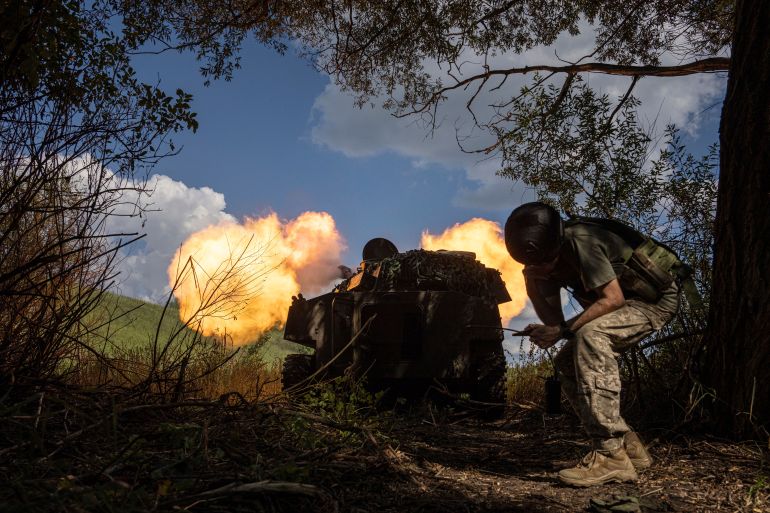
Kyiv says Russia has begun to redeploy troops to Ukraine’s southern regions of Kherson, Melitopol and Zaporizhia, as Ukraine appeared to launch a long-awaited counteroffensive to retake them in the 22nd week of the war.
If confirmed, such a redeployment would suggest Russia was on the defensive five months after losing a fight for Kyiv and focusing its military aims on the eastern oblasts of Luhansk and Donetsk. It has not yet succeeded in taking the two, which together comprise the Donbas.
Keep reading
list of 3 itemsRussian forces, Ukraine both claim control of vital power plant
Russia’s Gazprom to tighten squeeze on gas flow to Europe
Russian forces are trying to close in on Sloviansk and Kramatorsk in the heart of Donetsk.
Wagner Group mercenaries appeared to have taken the Vuhlehirsk power station – Russia’s first significant prize in the Donbas in weeks – but Russian forces have been largely static since they forced most Ukrainian defenders out of the city of Lysychansk on July 2, despite the fact that an operational pause concluded on July 16.
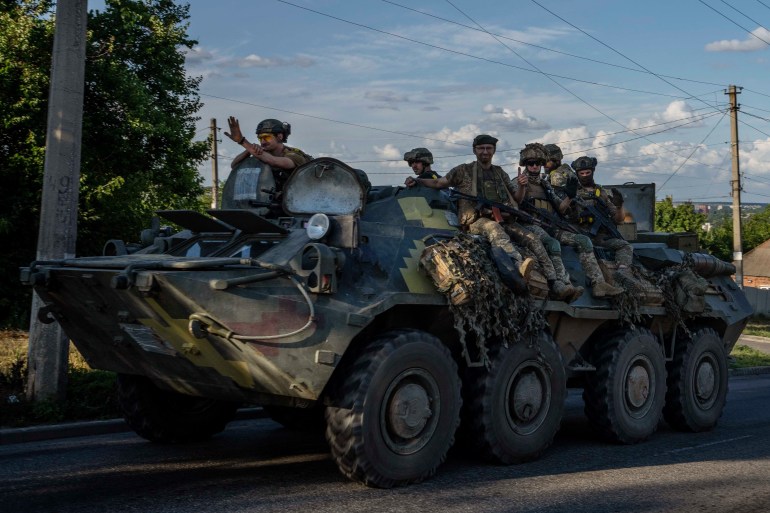
“Russian forces have not made significant advances towards Slovyansk or along the Siversk-Bakhmut salient in the past few weeks and are continuing to degrade their own offensive combat power in localized fights for small and relatively un-important settlements throughout Donetsk Oblast,” said the Institute for the Study of War, a think-tank.
Meanwhile, Ukraine appears to be preparing to isolate Russian forces in the south.
On July 19 and 20, Ukrainian forces struck the Antonyivski bridge across the Dnieper river, which separates Russian-occupied Kherson from the portion of the region still controlled by Kyiv, rendering it unusable for heavy military resupply.
On July 23, Ukrainians posted a video showing an attack on the Dariivka bridge, similar to that on the Antonyivski bridge.
Kherson administrative adviser Sergey Khlan said on Facebook: “This is a continuation of the operation to cut off the Kherson group of Russians from supply. Every bridge is a weak point in logistics and our Armed Forces masterfully destroy the enemy system,” describing the actions as “serious preparatory steps” towards a counteroffensive.
The following day, Military Informer, a Russian military blogger, reported that the bridge spanning the hydroelectric power dam at the Novakakhova power station had been damaged by Ukrainian artillery. Russian state news agency RIA Novosti shared images of the bridge being repaired.
The British defence ministry said the attacks on the three bridges on the Dnieper River suggest the Ukrainian counteroffensive is “gathering momentum”. US national security reporter Jack Detsch quoted an unnamed US official source saying Ukraine has begun to take back parts of occupied villages in Kherson.
On Facebook, Khlan asked Ukrainians in the vicinity of military advances to remain silent ahead of official announcements. “There are gains, promotions. But you need to remain silent,” he said. He said “a breakthrough has occurred in the course of hostilities. We see that the Armed Forces of Ukraine have begun counteroffensive actions in the Kherson region.”
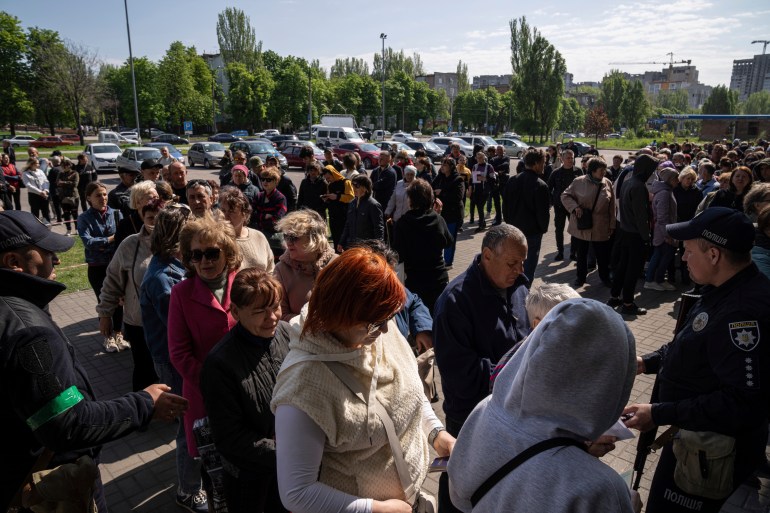
For the fourth time in six weeks, Ukrainian Deputy Prime Minister Iryna Vereshchuk told residents in Kherson and Zaporizhia regions to leave as soon as possible – both to protect their lives and to avoid participating in a referendum on joining the Russian Federation, which authorities worry may be imminent. “The Russian Federation sees that it is not perceived as a government, and therefore is in a hurry to hold so-called ‘referenda’… so find an opportunity to leave,” urged Vereshchuk.
Dmitro Butryi, an official of the Kherson state regional administration, said on Telegram that civilians cannot escape because Russian forces are taking their cars – suggesting that their military transports are being targeted and destroyed, which the ISW says is “consistent with support to an active counteroffensive”.
Ukrainian successes
Much of Ukraine’s success in recent weeks has been attributed to the skilful use of HIMARS – the US-supplied high mobility artillery rocket system, which was used to hit the three bridges.
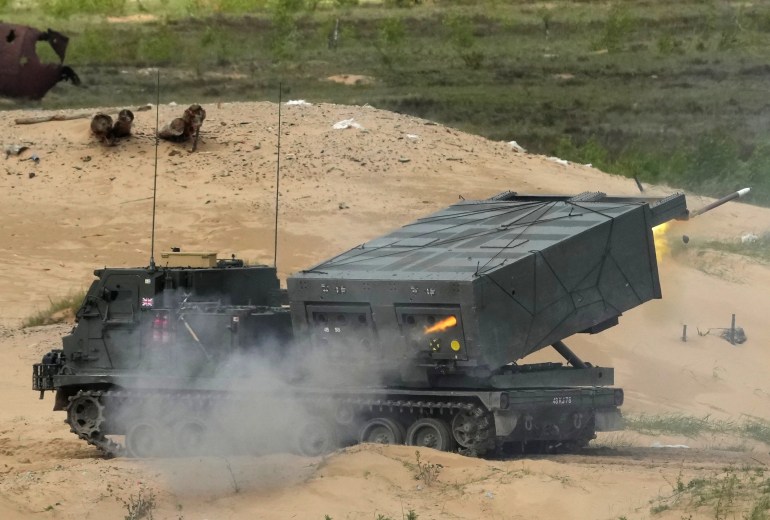
“Ukrainian forces have repeatedly demonstrated their skill in operating HIMARS and M270s, and 155mm Howitzers, and those skills have been crucial in the Donbas fight,” said US defence secretary Lloyd Austin after the Contact Group on the Defence of Ukraine met for the fourth time on July 20.
Moscow Calling, a Russian military reporter, said the arrival of HIMARS was a turning point in the war and had a “colossal” effect. He says the sanctions will prevent Russia from replenishing the smart weapons it has expended so far.
In response to the precision of HIMARS attacks, Russian forces have started using Ukrainian power plants as ammunition warehouses, evidently hoping they won’t be attacked, says Ukraine’s nuclear energy body, Energatom.
“The Russian military dragged at least 14 units of heavy military equipment with ammunition, weapons and explosives to the engine room of the 1st power unit of the Zaporizhzhia Nuclear Power Plant,” said Energatom. “The entire arsenal of imported heavy equipment with all ammunition is currently located very close to the equipment that ensures the operation of the turbogenerator. In particular, in the immediate vicinity of the main oil tank, which contains inflammable oil that cools the steam turbine. There is also explosive hydrogen, which is used to cool the generator,” its report said.
Oleksandr Starukh, head of the Zaporizhia military administration, confirmed this tactic on Telegram. Russian forces were using these positions to actively shell civilian settlements on the opposite side of the Dnieper river, said the mayor of Enerhodar.
On July 22, Ukraine demonstrated the limitations of this type of cover, when a kamikaze drone destroyed a Russian Grad multiple rocket launcher stationed in the vicinity of the Zaporizhzhia nuclear power plant, killing three and wounding 12. The resulting fire also torched Russian barracks set up in the plant’s immediate vicinity.
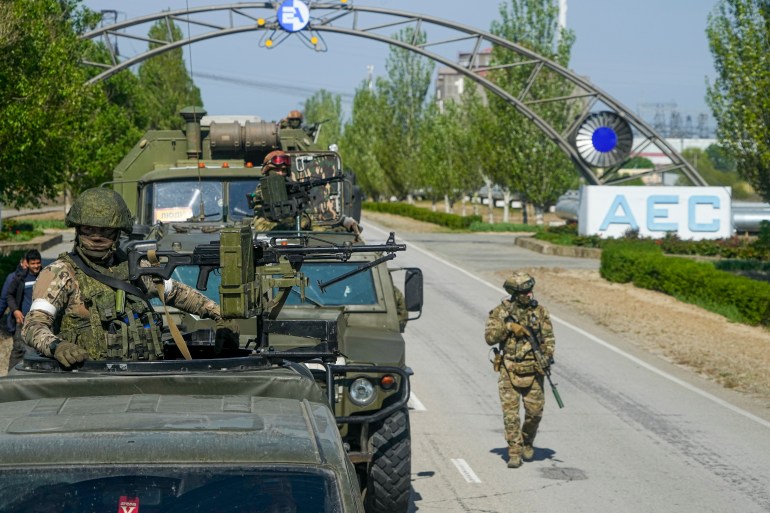
Ukraine evidently expects Russia to use the same method at the Enerhodar nuclear power plant, also in the Zaporizhia region. The country’s military intelligence asked the residents of Enerhodar to text it the geolocation of Russian forces and provide details on their movements.
Personnel shortages and low morale have dogged Russia’s efforts. Ukrainian intelligence spokesman Kyrylo Skibitskyi told Radio Svoboda that Russia has formed eight volunteer battalions of 500-600 soldiers each, and plans to form another eight by the end of the month.
Russia ordered its 85 regions in June to raise a battallion each. In addition, Skibitskyi says Russia is assembling a corps of 10,000-15,000 in the region of Nishny Novgorod. But, he said, Russians due for conscript army service are resisting pressure to sign contracts that could see them sent to Ukraine.